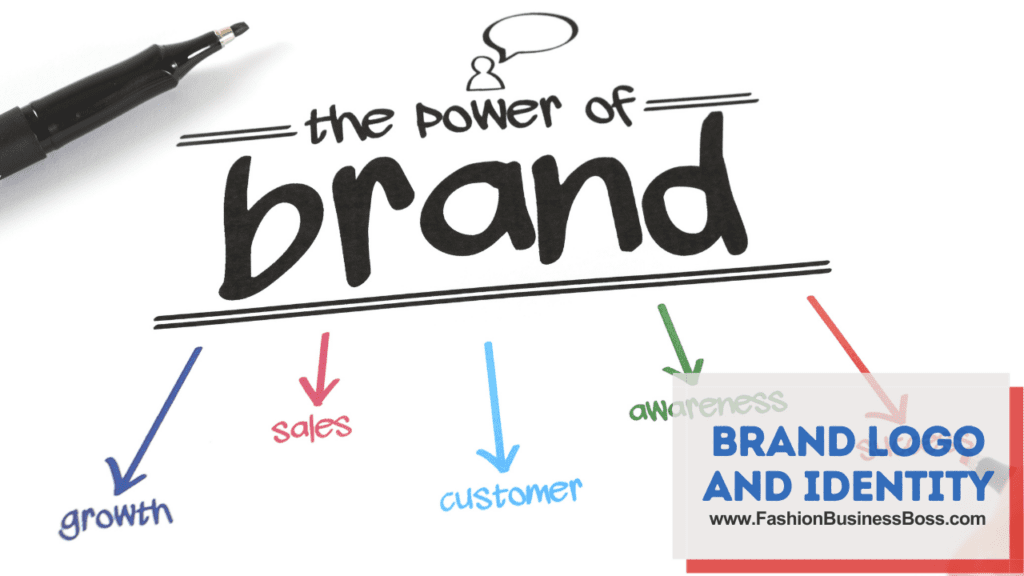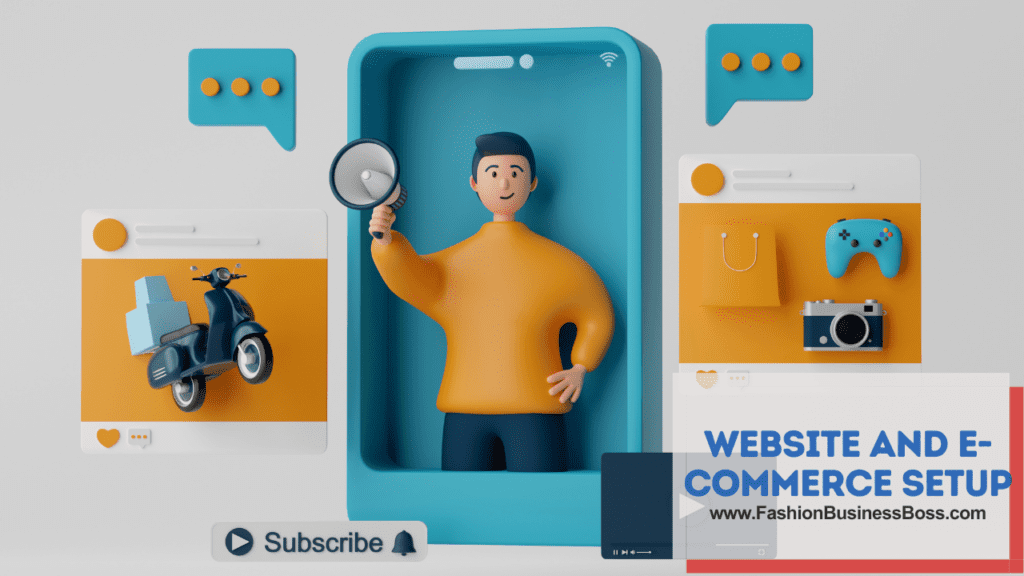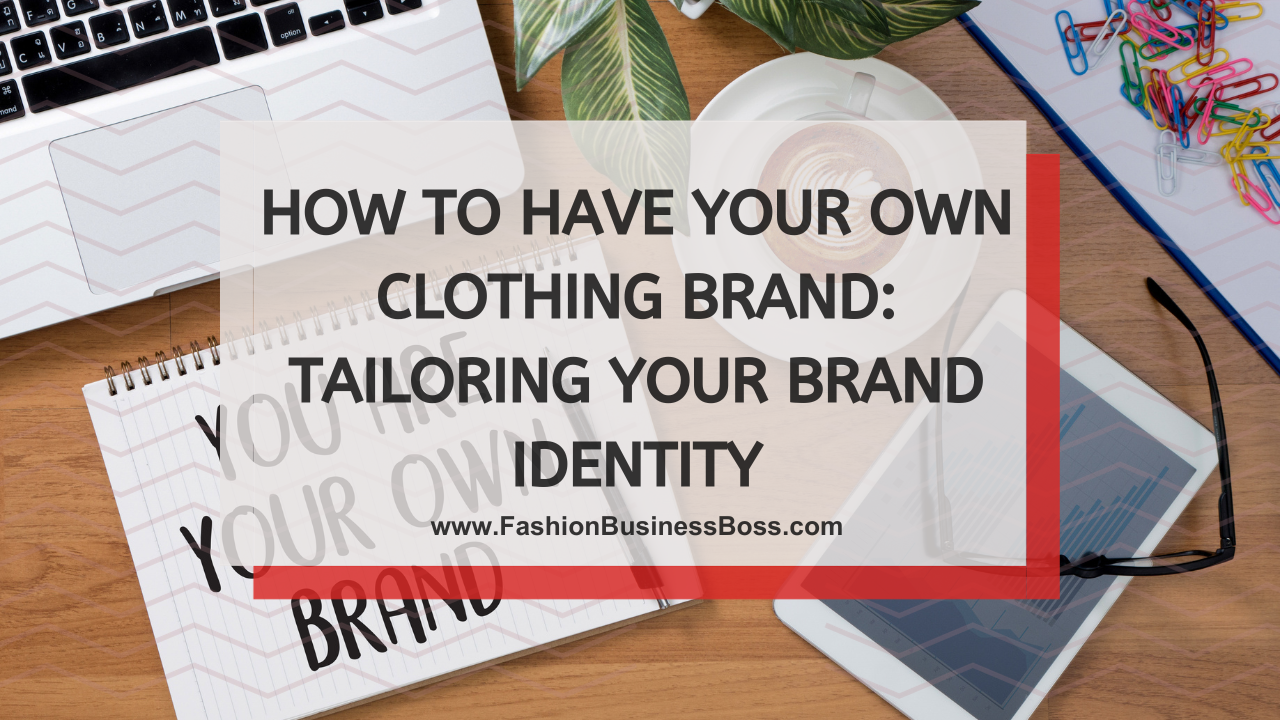Many creative minds aspire to turn their love for style into a thriving business. The fashion industry is vast and diverse, offering endless opportunities for those willing to take the plunge.
To establish your own clothing brand, start by conducting thorough market research, design your clothing, choose quality materials, create a standout brand logo, and ensure legal compliance.
In this article, we’ll explore the steps to transform your clothing brand dream into a thriving reality.
Market Research and Target Audience

Market research and understanding your target audience are fundamental steps in building your clothing brand. Much like your approach to creating content for your blog and optimizing it for Google ranking, this process involves thorough investigation.
Begin by identifying who your potential customers are. What are their demographics, such as age, gender, and location? Learn about their preferences – what styles, colors, or materials do they favor? Knowing their needs and desires is crucial. What issues can your clothing brand address or solve for them? This is where your brand’s unique value comes into play.
Conduct market research by using surveys, online tools, and analyzing trends. Listen to your audience through social media, forums, and direct interactions. By gathering this data, you’ll refine your brand strategy. It will guide your decisions on design, marketing, and even pricing. Remember, your goal is to create clothing that resonates with your target audience, just as your blog aims to engage and inform your readers.
Read more about: From Fabric to Fashion: Calculating the Cost of Clothing Production
Designing Your Clothing
The process of designing your clothing lies at the core of your brand’s identity. It’s where your brand takes shape visually. To do this effectively, collaboration is key. If you possess design skills, you can create initial prototypes yourself. However, if you’re not a designer, partnering with skilled professionals is essential.
Your designs must harmonize with your brand’s vision. This means that the style, look, and feel of your clothing should match the story you want your brand to tell. Equally important is catering to the tastes and preferences of your intended audience. It’s crucial to consider what will appeal to them.
By involving skilled designers and keeping your brand’s vision and your target audience’s preferences at the forefront of the design process, you ensure that your clothing aligns with your brand’s identity. This alignment will make your brand more appealing and relatable to your audience, just as your blog content aims to resonate with your readers.
Sourcing Materials and Production
Sourcing materials and managing production are critical aspects of your clothing brand’s journey. The materials you choose play a pivotal role in the quality and style of your clothing.
First and foremost, it’s vital to select the right materials. This decision should align with the level of quality and the specific style you want to offer your customers. Different fabrics and materials convey various textures, durability, and appearances, so choose wisely to match your brand’s identity.
When it comes to producing your clothing, you have options. You can partner with established manufacturers who specialize in clothing production. Alternatively, you may explore local production options if that suits your brand’s goals and values.
It’s worth noting that sustainability and ethical practices have gained importance in the fashion industry. If these values align with your brand’s mission, consider incorporating sustainable materials and ethical production methods into your clothing creation process. This not only aligns with current trends but also reflects a responsible approach to business, similar to how your blog promotes valuable and ethical content to your audience.
Brand Logo and Identity

Crafting your brand logo and identity is a pivotal step in establishing your clothing brand. Just as you grasp the significance of branding, creating a memorable brand logo is essential.
Your brand logo serves as the visual face of your brand. It must encapsulate the core essence of your brand and be instantly recognizable to your audience. Think of it as the face of your brand, the image that people will associate with your clothing.
To accomplish this, it’s wise to invest in professional logo design services. Professionals possess the skills to translate your brand’s values and message into a visual emblem that resonates with your target audience.
Establishing a consistent brand identity is vital. This means choosing specific colors, fonts, and imagery that will consistently represent your brand across all aspects of your business, from clothing labels to marketing materials. Consistency helps your audience recognize and connect with your brand, much like how you maintain a consistent tone and style in your blog to engage and inform your readers.
Read more about: From Idea to Apparel: Starting a Made-to-Order Clothing Brand
Legalities and Business Setup
Launching a clothing brand involves several essential legal and business considerations. Just as you value the importance of following legal guidelines in your work, adhering to these steps is crucial.
To start, it’s necessary to register your business officially. This entails selecting a legal structure, such as a sole proprietorship or LLC, and completing the required paperwork. Registering your business ensures that it operates within the bounds of the law.
Obtaining the necessary permits is another critical step. Depending on your location and the nature of your clothing brand, you may require specific permits and licenses to operate legally. Research your local regulations to ensure compliance.
Trademarking your brand is advisable, especially if you want to protect your brand’s name, logo, or unique identifiers. This legal protection safeguards your brand from potential infringement.
Lastly, developing a comprehensive business plan is essential. This plan outlines your financial forecasts, marketing strategies, and growth plans. It serves as a roadmap for your brand’s development and guides your decision-making.
By addressing these legalities and setting up your business properly, you create a solid foundation for your clothing brand, similar to how you establish a structured approach to content creation in your blog to provide valuable information to your readers.
Production and Quality Control
Ensuring the quality of your clothing production is of utmost importance. It’s much like the attention to detail you provide in your content copywriting work.
Quality control is the process of thoroughly checking each batch of clothing to make sure they meet the standards you’ve set. This involves close inspection to identify any defects or issues in the clothing.
By maintaining stringent quality control, you guarantee that every piece of clothing you deliver to your customers is of the highest standard. This not only reflects positively on your brand but also builds trust with your customers.
Quality control is a vital aspect of creating a loyal customer base. When customers receive clothing that meets or exceeds their expectations, they are more likely to return and recommend your brand to others. In essence, it’s about delivering on the promises you make through your brand and ensuring that customers are satisfied with their purchases, much like how your informative content keeps your blog readers engaged and coming back for more.
Website and E-Commerce Setup

In today’s digital world, having a strong online presence is a must for your clothing brand, just as you understand the importance of a well-structured blog.
Firstly, you need a website that is not only visually appealing but also user-friendly. Your website is like the storefront of your brand in the digital realm. It should showcase your clothing and brand identity effectively.
To enable online sales, invest in e-commerce solutions. These tools and platforms make it possible for customers to browse your products, make purchases, and have a smooth shopping experience on your website.
Moreover, optimizing your website for search engines, particularly Google, is essential. This involves using relevant keywords and other techniques to help your website appear in search engine results when potential customers look for clothing similar to what you offer. This organic traffic can be highly valuable for your brand’s visibility and growth.
Your website serves as the digital hub of your brand, much like how your blog is a hub for valuable information. It’s where customers can find and engage with your products, and it plays a vital role in your brand’s overall growth.
Read more about: From Sketch to Chic: Crafting Your Own Designer Wear
Marketing and Promotion
Marketing and promotion are essential aspects of making your clothing brand known to your target audience, much like your expertise in content copywriting.
To begin, use your content copywriting skills to craft persuasive marketing content. This content should effectively communicate your brand’s message and engage potential customers. This can include product descriptions, blog posts, and social media captions.
Leverage social media platforms to reach a wider audience. Share engaging posts, images, and stories that showcase your clothing and brand identity. This helps you connect with your audience on a more personal level.
Email marketing is another powerful tool. Send regular newsletters to your subscribers, sharing updates, promotions, and valuable content. This keeps your audience informed and engaged.
Collaborating with influencers who align with your brand can extend your reach. These individuals can promote your clothing to their followers, increasing your brand’s visibility.
Consider running paid advertising campaigns on platforms like social media or search engines. These campaigns can help boost your brand’s visibility, especially to those who might not have discovered it otherwise.
Launch and Expansion
Once all the essential elements are in order, the next step is to launch your clothing brand. Just as you value a well-structured approach to content creation, a well-planned launch is crucial.
Consider hosting a memorable launch event, either online or in a physical location, depending on your resources and target audience. This event serves to generate excitement and anticipation among potential customers. It’s a way to introduce your brand to the world.
As your brand gains momentum and recognition, you can explore opportunities for expansion. For instance, you might consider adding new product lines that align with your brand’s identity and cater to your existing customer base. Expanding your product range can attract more customers and increase sales.
You may also explore the possibility of opening physical store locations if it fits your brand’s strategy and budget. Physical stores can provide a tangible experience for customers and enhance your brand’s presence.
Launching your clothing brand involves creating anticipation through a well-planned launch event, whether online or offline. As your brand grows, exploring expansion options, such as new products or physical stores, can contribute to its growth and recognition, similar to how your blog may evolve and expand over time to meet the needs of your readers.
Conclusion
Starting your own clothing brand is a challenging but fulfilling endeavor. With dedication, creativity, and a solid plan, you can turn your fashion dreams into a thriving reality. Remember, the fashion industry is ever-evolving, so stay flexible and open to innovation. Embrace the journey, and soon you may find yourself as the proud owner of a clothing brand.
Frequently Asked Questions

Q: How can one initiate the process of starting a clothing brand?
A: To commence the process of establishing a clothing brand, one should begin by defining the brand’s style and identifying the target audience. Conducting thorough market research to understand customer preferences is essential.
Q: What factors should be considered when designing clothing for a brand?
A: When designing clothing for a brand, it is important to ensure that the designs align with the brand’s vision and resonate with the target audience. Collaboration with skilled designers and a focus on quality and style are crucial.
Q: How can a memorable brand logo and identity be created?
A: To craft a memorable brand logo, consider investing in professional logo design services. The logo should effectively represent the brand’s essence and be easily recognizable. Establishing a consistent brand identity with colors, fonts, and imagery is key.
Q: What legal steps are necessary for launching a clothing brand?
A: Launching a clothing brand involves several legal considerations. These include registering the business, obtaining the necessary permits, and potentially trademarking the brand. Developing a comprehensive business plan outlining financial projections and growth strategies is also essential.
Q: How can a clothing brand be effectively marketed and promoted?
A: To effectively market and promote a clothing brand, various strategies can be employed, such as content creation, engaging with social media, utilizing email marketing, and collaborating with influencers. Considering paid advertising campaigns can enhance brand visibility.
To learn more about starting your own clothing business, check out my startup documents here.
Please note that the contents of this blog are for informational and entertainment purposes only and should not be construed as legal advice. Any action taken based on the information provided in this blog is solely at your own risk. Additionally, all images used in this blog are generated under the CC0 license of Creative Commons, which means they are free to use for any purpose without attribution.

Meet Shawn Chun: Entrepreneur and Fashion Business Fan.
I’m a happy individual who happens to be an entrepreneur. I have owned several types of businesses in my life from a coffee shop to an import and export business to an online review business plus a few more and now I create online resources for those interested in starting new ventures. It’s demanding work but I love it. I do it for those passionate about their business and their goals. That’s why when I meet a designer or boutique owner at a craft fair, farmers market, retail location or anywhere else I see myself. I know how hard the struggle is to retain clients, find good employees and keep the business growing all while trying to stay competitive.
That’s why I created Fashion Business Boss: I want to help fashion business owners like you build a thriving business that brings you endless joy and supports your ideal lifestyle.

